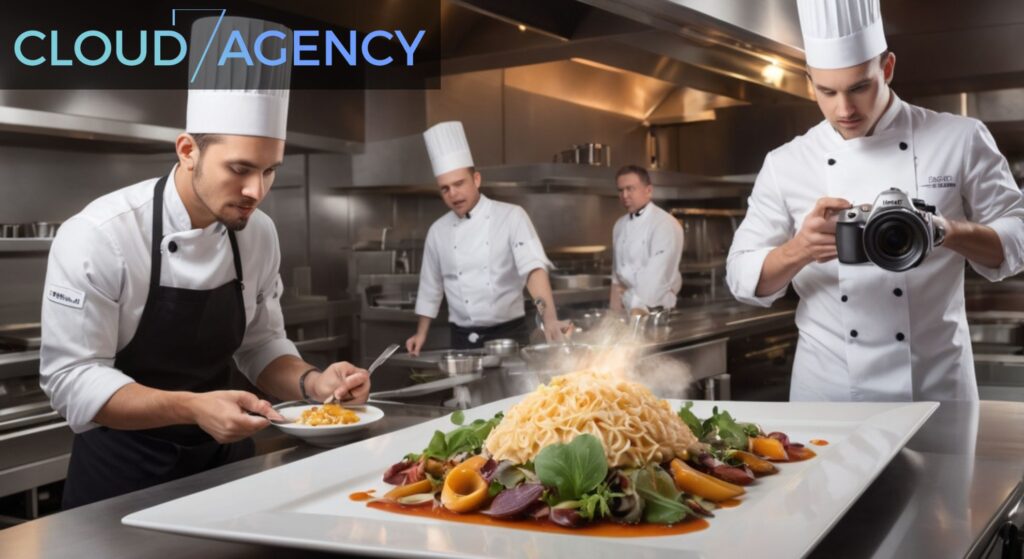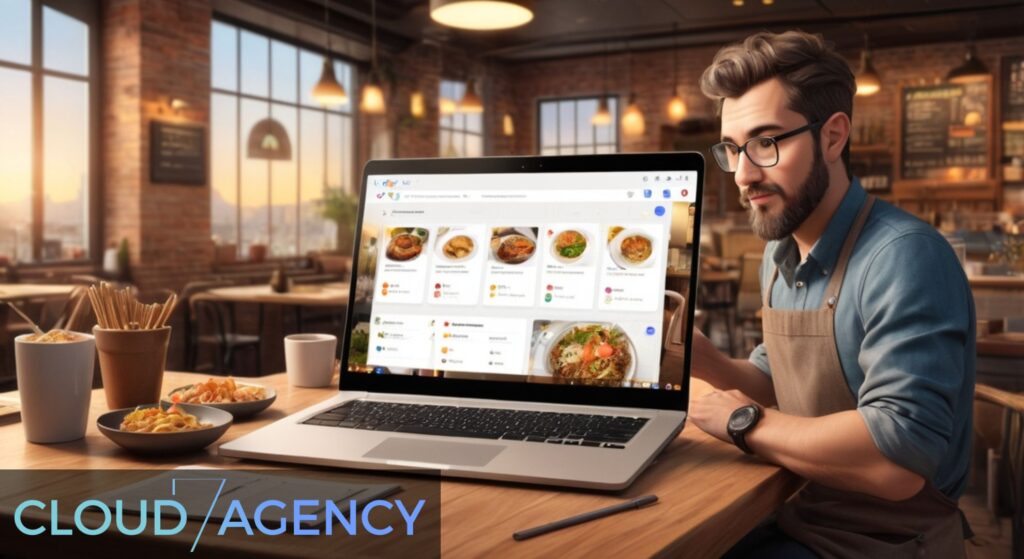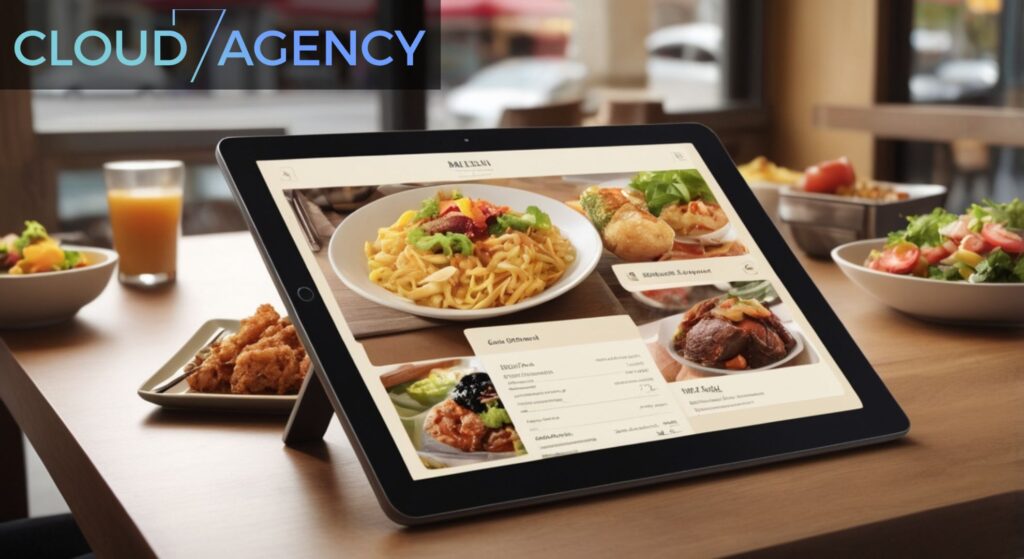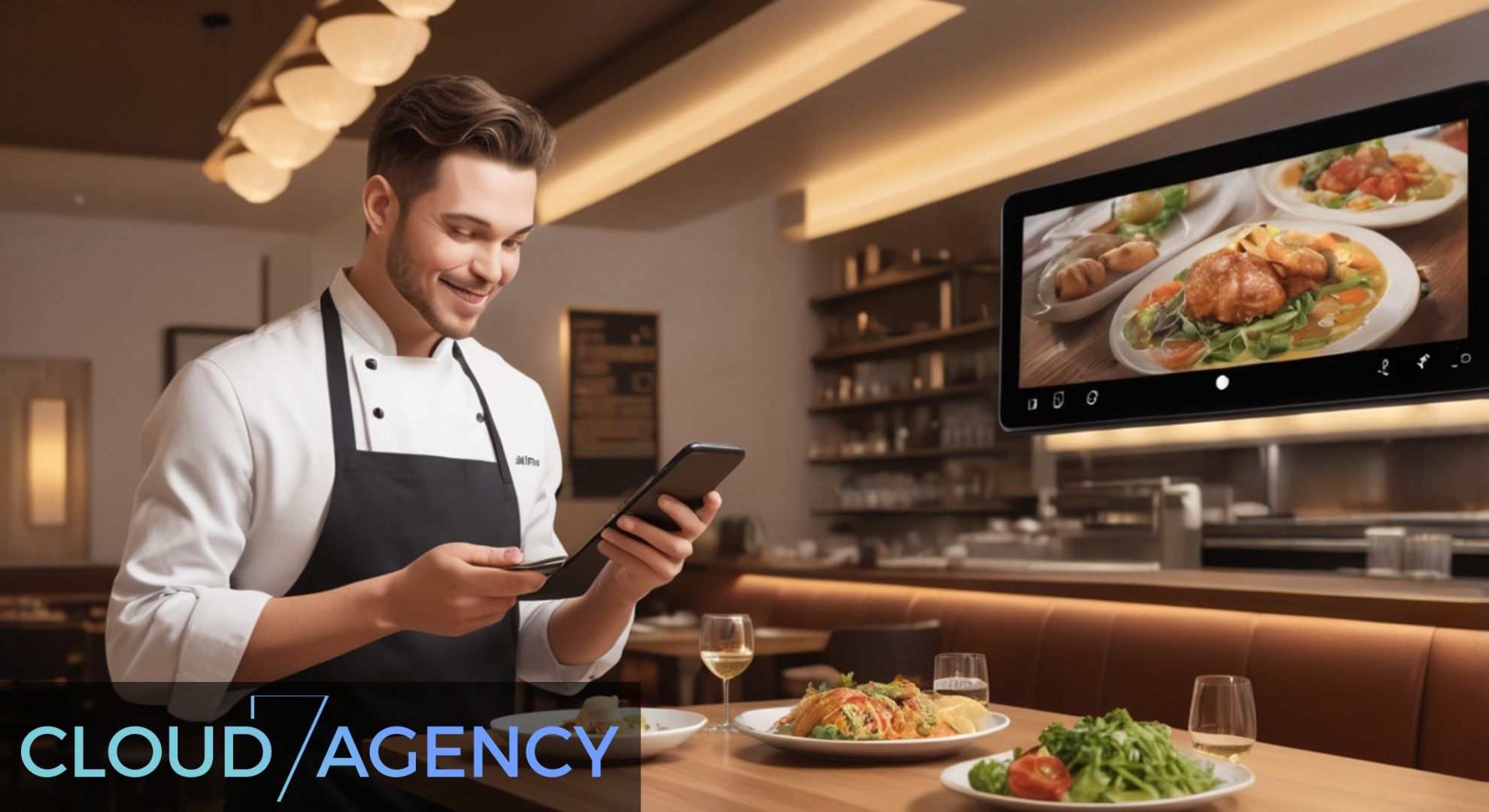In today’s digital-first world, restaurant success depends heavily on how well establishments present themselves online. Local SEO has become the cornerstone of restaurant marketing, with menu optimization serving as a critical component that can make or break a dining establishment’s online visibility. When potential customers search for restaurants in their area, they’re not just looking for a place to eat—they’re seeking an experience that begins the moment they discover your establishment online.
Restaurant SEO encompasses far more than simply having a website. It involves creating a comprehensive digital presence that showcases your menu, captures the essence of your dining experience through professional photography, and streamlines the booking process to convert online browsers into paying customers. The modern diner’s journey typically starts with a Google search, progresses through menu browsing, includes visual assessment through photos, and culminates in either a reservation or a visit.
Menu optimization stands at the heart of this digital transformation. It’s not enough to simply upload a PDF of your physical menu and hope for the best. Today’s restaurant owners must understand how search engines interpret menu content, how customers interact with digital menus, and how to structure menu information to maximize both search visibility and customer engagement. This optimization process involves strategic keyword placement, proper formatting, detailed descriptions, and integration with local search signals.
The competitive landscape for restaurants has intensified dramatically, with establishments competing not just on food quality and service, but on their digital presence. Restaurants that fail to optimize their online menu presentation, photo galleries, and booking systems find themselves invisible to potential customers who rely on search engines to discover dining options. Conversely, restaurants that master these digital elements often see significant increases in reservations, walk-ins, and overall revenue.
Professional digital marketing agencies like C7A understand that restaurant SEO requires a nuanced approach that balances search engine requirements with user experience. The goal is creating an online presence that not only ranks well in local search results but also effectively communicates the restaurant’s unique value proposition and encourages immediate action from potential diners.
Key Takeaways
Menu Structure Drives Search Visibility: Properly formatted digital menus with descriptive dish names, detailed ingredients, and strategic keyword placement significantly improve local search rankings and help customers find specific cuisine types or dietary options.
Professional Photography Increases Conversion Rates: High-quality food photography, restaurant ambiance shots, and behind-the-scenes images create emotional connections with potential diners and can increase booking rates by up to 40% compared to text-only listings.
Streamlined Booking Systems Reduce Abandonment: Integrated reservation systems that work seamlessly across all devices and platforms minimize booking friction, with optimized systems showing 25-30% higher completion rates than complex multi-step processes.
Local SEO Signals Multiply Restaurant Visibility: Consistent NAP information, Google My Business optimization, and location-specific content help restaurants dominate local search results and attract nearby customers.
Mobile Optimization Is Non-Negotiable: With over 80% of restaurant searches happening on mobile devices, mobile-first design for menus, photos, and booking systems directly impacts search rankings and customer experience.
Customer Reviews Integration Builds Trust: Showcasing authentic customer reviews alongside menu items and photos creates social proof that influences dining decisions and improves local search authority.
Seasonal Menu Updates Maintain Freshness: Regular menu updates signal to search engines that content is current and relevant, while seasonal optimization helps capture timely search trends and special occasion dining.
Understanding Restaurant Local SEO Fundamentals
Local SEO for restaurants operates on unique principles that differ significantly from general business optimization strategies. Search engines prioritize restaurants based on proximity, relevance, and prominence, with each factor requiring specific optimization approaches. Proximity relates to how close a restaurant is to the searcher’s location, while relevance depends on how well the restaurant’s online information matches the search query. Prominence encompasses the restaurant’s overall online reputation and authority.

The foundation of restaurant SEO begins with Google My Business optimization, which serves as the primary interface between restaurants and local searchers. This platform requires comprehensive information including accurate business hours, contact details, menu highlights, and regular updates about specials or events. Restaurants that maintain active, detailed Google My Business profiles typically receive 35% more clicks than those with basic listings.
Menu optimization within the local SEO context involves creating content that satisfies both search engine algorithms and user intent. When someone searches for “Italian restaurant near me” or “gluten-free dinner options,” search engines scan menu content to determine relevance. Restaurants with detailed, well-structured digital menus that include ingredient lists, preparation methods, and dietary indicators rank higher for specific cuisine and dietary searches.
Location-based keywords play a crucial role in restaurant SEO success. Incorporating neighborhood names, local landmarks, and city-specific terms throughout menu descriptions and website content helps establish geographic relevance. For example, a restaurant might describe a dish as “locally-sourced salmon from Pacific Northwest waters” or “authentic Brooklyn-style pizza,” connecting menu items to location-specific search terms.
The technical aspects of restaurant SEO include schema markup implementation, which helps search engines understand menu structure, pricing, and availability. Structured data markup for restaurants can include menu sections, individual dishes, prices, and even nutritional information, making this content more accessible to search engine crawlers and more likely to appear in rich search results.
Strategic Menu Optimization for Search Engines
Menu optimization extends far beyond simply listing dishes and prices. Strategic menu optimization involves crafting descriptions that incorporate relevant keywords while maintaining appetizing language that entices customers. Each menu item represents an opportunity to capture specific search queries, from cuisine types and cooking methods to dietary restrictions and ingredient preferences.
Effective menu descriptions balance SEO requirements with culinary appeal. Instead of simply listing “Grilled Chicken,” an optimized description might read “Herb-Crusted Free-Range Chicken Breast with Seasonal Vegetables and Quinoa Pilaf.” This approach incorporates multiple keywords (herb-crusted, free-range, seasonal vegetables, quinoa) while painting a vivid picture of the dish that appeals to health-conscious diners.
Menu categorization plays a vital role in both user experience and search optimization. Clear, descriptive category names help search engines understand menu structure while making navigation intuitive for customers. Categories like “Plant-Based Entrees,” “Gluten-Free Options,” or “Locally-Sourced Appetizers” serve dual purposes of SEO optimization and customer service.
Pricing transparency in digital menus affects both search rankings and customer trust. Restaurants that display clear pricing information tend to rank higher in local searches because search engines interpret price transparency as a quality signal. Additionally, customers appreciate knowing costs upfront, reducing the likelihood of abandonment during the decision-making process.
Seasonal menu optimization provides opportunities to capture timely search traffic while keeping content fresh. Restaurants should regularly update menu descriptions to reflect seasonal ingredients, holiday specials, and limited-time offerings. These updates signal to search engines that the website contains current, relevant information, potentially boosting search rankings during peak seasons.
The integration of nutritional information and dietary indicators within menu descriptions serves both SEO and customer service purposes. Keywords like “vegan,” “keto-friendly,” “low-sodium,” and “gluten-free” help capture specific dietary searches while providing valuable information to customers with dietary restrictions or preferences.
Professional Photography and Visual Content Strategy
Visual content serves as the primary driver of customer engagement in restaurant marketing, with professional photography directly impacting both search performance and conversion rates. Search engines increasingly prioritize visual content in local search results, making high-quality photography essential for restaurant visibility. Google My Business listings with professional photos receive 42% more requests for driving directions and 35% more click-throughs to restaurant websites.

Food photography requires specialized techniques that differ from general commercial photography. Professional food photographers understand lighting, composition, and styling techniques that make dishes appear fresh, appetizing, and true-to-life. The goal is creating images that accurately represent the dining experience while evoking emotional responses that drive booking decisions.
Beyond individual dish photography, restaurants need comprehensive visual content that tells their complete story. This includes ambiance shots showcasing dining room atmosphere, behind-the-scenes kitchen photos highlighting food preparation, staff photos building personal connections, and exterior shots helping customers locate the establishment. Each image type serves specific purposes in the customer journey from discovery to visit.
Image optimization for search engines involves technical considerations including file naming, alt text descriptions, and compression for fast loading speeds. Images should be named descriptively (e.g., “grilled-salmon-seasonal-vegetables.jpg” rather than “IMG_1234.jpg”) and include detailed alt text that describes both the visual content and relevant keywords.
The strategic placement of visual content throughout digital platforms maximizes impact and search visibility. Professional photos should be prominently featured on Google My Business profiles, restaurant websites, social media platforms, and third-party review sites. Consistency in visual quality and style across all platforms reinforces brand identity and professionalism.
Video content represents an emerging opportunity for restaurant marketing, with short-form videos showcasing food preparation, chef interviews, and dining experiences gaining traction in search results. Restaurants that incorporate video content into their digital strategy often see increased engagement rates and longer website visit durations, both positive signals for search engine rankings.
Booking System Integration and User Experience
Modern restaurant booking systems must seamlessly integrate with local SEO strategies while providing frictionless user experiences across all devices and platforms. The booking process often represents the final step in the customer journey, making optimization crucial for converting online interest into actual reservations. Restaurants with streamlined, accessible booking systems typically see 25-30% higher conversion rates compared to those with complex or poorly integrated reservation processes.
The technical integration of booking systems affects search engine optimization through several mechanisms. Fast-loading booking widgets, mobile-responsive design, and clear call-to-action placement all contribute to positive user experience signals that search engines factor into ranking algorithms. Additionally, booking systems that generate structured data about availability and reservation options can appear in rich search results, increasing visibility and click-through rates.
Multi-platform booking integration ensures customers can make reservations regardless of how they discover the restaurant. This includes embedding booking widgets directly into Google My Business profiles, integrating reservation systems with social media platforms, and ensuring booking functionality works seamlessly on both desktop and mobile devices. The goal is removing any friction that might prevent a potential customer from completing a reservation.
Real-time availability display builds customer confidence and reduces booking abandonment. When customers can see immediate availability for their preferred dining times, they’re more likely to complete reservations rather than exploring alternative restaurants. This transparency also reduces phone calls to the restaurant, allowing staff to focus on service rather than reservation management.
Automated confirmation and reminder systems enhance customer experience while reducing no-show rates. Well-designed booking systems send immediate confirmation emails, follow-up reminders, and even allow customers to modify or cancel reservations online. These features improve customer satisfaction and operational efficiency while generating positive reviews that boost local search rankings.
The integration of customer preferences and special requests within booking systems provides opportunities for personalized service and repeat business. Systems that remember dietary restrictions, seating preferences, and special occasions enable restaurants to provide exceptional service that generates positive reviews and word-of-mouth recommendations, both crucial factors in local SEO success.
Technical Implementation and Platform Integration
The technical foundation of restaurant SEO requires careful attention to website performance, mobile optimization, and cross-platform integration. Search engines prioritize websites that load quickly, function properly on mobile devices, and provide consistent information across all digital touchpoints. Restaurants must ensure their technical infrastructure supports both search engine crawling and optimal user experiences.

Website speed optimization directly impacts both search rankings and customer satisfaction. Restaurant websites should load in under three seconds, with particular attention to image compression and efficient hosting solutions. Slow-loading websites not only rank lower in search results but also experience higher bounce rates as hungry customers quickly move to faster alternatives.
Mobile-first design principles are essential for restaurant websites, given that over 80% of restaurant searches occur on mobile devices. This means designing for small screens first, ensuring touch-friendly navigation, and optimizing menu browsing for mobile interfaces. Mobile optimization affects local search rankings significantly, as Google uses mobile page speed and usability as primary ranking factors.
Schema markup implementation helps search engines understand restaurant-specific information including menu items, pricing, hours of operation, and reservation availability. Properly implemented structured data can result in rich snippets in search results, showing menu highlights, pricing, and booking options directly in search listings. This enhanced visibility often leads to higher click-through rates and increased reservations.
Cross-platform consistency ensures that restaurant information remains accurate across all digital channels. This includes maintaining consistent NAP (Name, Address, Phone) information, synchronized menu updates, and coordinated pricing across the restaurant website, Google My Business, third-party delivery platforms, and social media profiles. Inconsistent information confuses both search engines and customers, potentially harming local search rankings.
Analytics implementation and monitoring provide insights into customer behavior, search performance, and conversion optimization opportunities. Restaurants should track metrics including website traffic sources, menu page engagement, booking completion rates, and local search visibility. Companies like C7A specialize in implementing comprehensive analytics solutions that help restaurants understand and optimize their digital performance.
Frequently Asked Questions
How often should restaurants update their online menus for optimal SEO performance?
Restaurants should update their online menus at least monthly to maintain search engine freshness signals, with immediate updates for seasonal items, pricing changes, and new dishes. Regular updates demonstrate to search engines that content is current and relevant.
What types of photos are most important for restaurant local SEO?
Essential photos include signature dishes, restaurant interior and exterior, staff photos, and behind-the-scenes kitchen shots. Each image should be professionally shot, properly optimized with descriptive file names and alt text, and showcase the restaurant’s unique atmosphere and food quality.
How do booking systems affect local search rankings?
Integrated booking systems improve user experience signals that search engines monitor, including page load speed, mobile responsiveness, and conversion rates. Restaurants with seamless booking experiences typically rank higher in local searches due to positive user engagement metrics.
Should restaurants include pricing in their online menu descriptions?
Yes, price transparency generally improves local search rankings and customer trust. Search engines interpret clear pricing as a quality signal, and customers appreciate knowing costs upfront, leading to higher conversion rates and fewer abandoned bookings.
How important is mobile optimization for restaurant SEO?
Mobile optimization is crucial, as over 80% of restaurant searches occur on mobile devices. Google uses mobile page speed and usability as primary ranking factors for local searches, making mobile-first design essential for restaurant visibility.
What role do customer reviews play in restaurant menu optimization?
Customer reviews provide valuable keyword insights and social proof that enhance menu optimization efforts. Reviews often mention specific dishes, ingredients, and dining experiences, providing natural keyword opportunities and credibility signals that improve search rankings.
How can restaurants optimize for voice search queries?
Voice search optimization involves incorporating natural language phrases and question-based keywords into menu descriptions and website content. Focus on conversational phrases like “best gluten-free pasta near me” or “restaurants with outdoor seating” that match how people speak to voice assistants.
What technical elements are most important for restaurant website SEO?
Critical technical elements include fast page loading speeds, mobile responsiveness, schema markup for restaurant information, SSL certificates for security, and consistent NAP information across all platforms. These factors directly impact local search rankings and user experience.
Conclusion
Restaurant success in today’s digital landscape requires a comprehensive approach to local SEO that integrates menu optimization, professional photography, and streamlined booking systems. The modern diner’s journey begins with online discovery and progresses through digital menu browsing, visual assessment, and reservation completion. Restaurants that excel at each stage of this digital journey consistently outperform competitors in both search rankings and revenue generation.
Menu optimization serves as the foundation of restaurant SEO, requiring strategic keyword integration, detailed descriptions, and regular updates that satisfy both search engine algorithms and customer needs. Professional photography creates emotional connections that drive booking decisions while providing visual content that search engines increasingly prioritize in local results. Integrated booking systems complete the customer journey by removing friction and providing seamless reservation experiences.
The technical implementation of these elements requires expertise in web development, SEO best practices, and restaurant industry knowledge. Digital marketing agencies like C7A specialize in creating comprehensive restaurant SEO strategies that balance search engine requirements with exceptional user experiences. Their expertise in restaurant marketing ensures that optimization efforts translate into measurable increases in reservations, customer acquisition, and revenue growth.
As search engines continue evolving and customer expectations rise, restaurants must maintain current, optimized digital presences that showcase their unique value propositions. The investment in professional menu optimization, photography, and booking system integration pays dividends through increased visibility, higher conversion rates, and sustainable business growth in an increasingly competitive marketplace.

